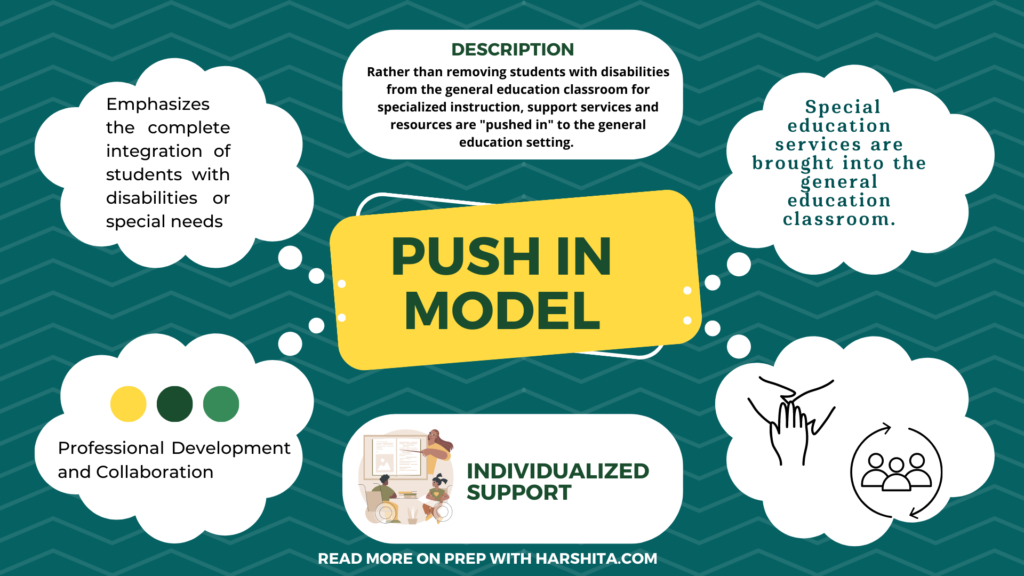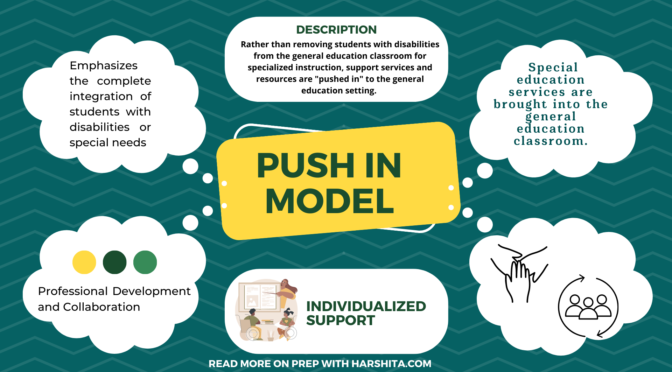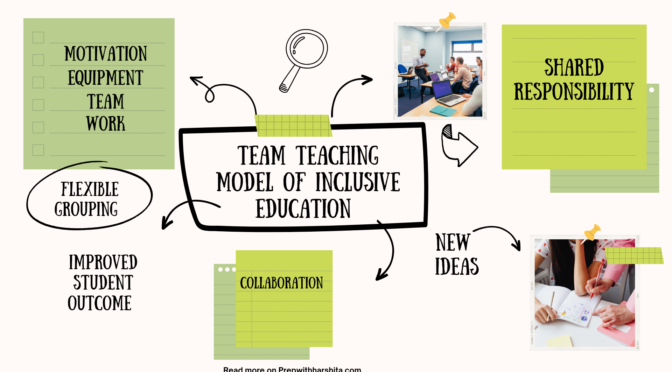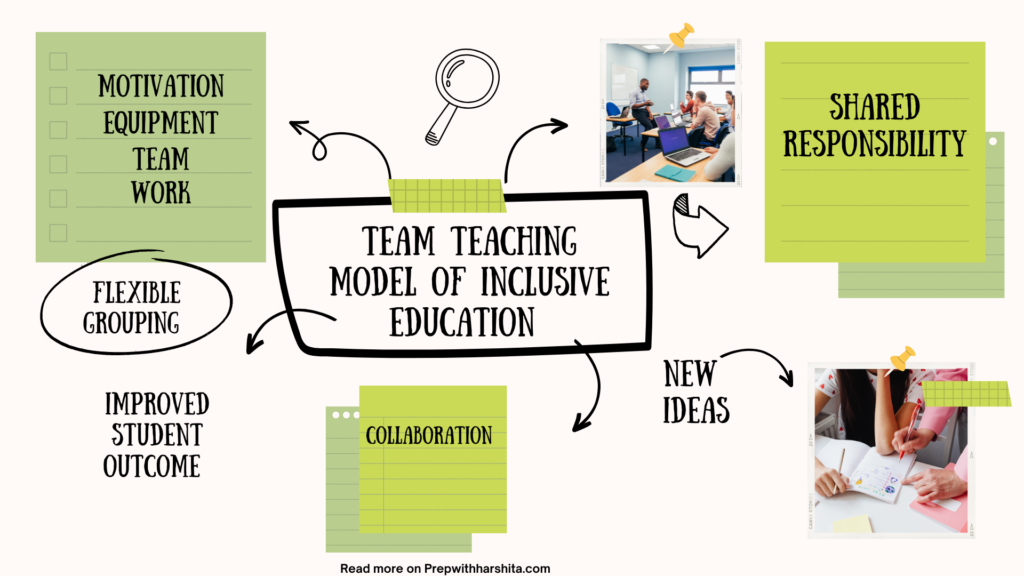The push-in model refers to a different approach to inclusive education where special education services are brought into the general education classroom.
In the push-in model, rather than removing students with disabilities from the general education classroom for specialized instruction, support services and resources are “pushed in” to the general education setting. This means that a special education teacher or support staff members enter the general education classroom to provide additional support to students with disabilities while they remain in the regular classroom environment.
The push-in model is often used in combination with other inclusive practices, such as co-teaching or consultation models, where collaboration between general education and special education teachers is emphasized. The aim is to promote access to the general education curriculum, increase social interaction, and provide targeted support within the least restrictive environment.
Here are some details about the push-in model of inclusive education:
- Support within the General Education Classroom: In this, specialized support personnel, such as special education teachers, therapists, or paraprofessionals, enter the general education classroom to provide targeted support to students with disabilities. They work directly with the students in the same classroom environment rather than pulling them out for separate instruction.
- Collaboration with General Education Teachers: In this, collaboration between general education and special education teachers is emphasized. The support personnel work closely with the general education teacher to align instruction, modify materials, and adapt teaching strategies to meet the individual needs of students with disabilities.
- Individualized Support: Support personnel in the push-in model provide individualized support to students with disabilities based on their specific needs and goals outlined in their Individualized Education Plans (IEPs). They may offer additional explanations, adaptations, or accommodations to help students access the curriculum and participate in classroom activities.
- Differentiated Instruction: The push-in model encourages differentiated instruction within the general education classroom. Teachers and support personnel employ various instructional strategies to address the diverse learning needs of all students, including those with disabilities. This may involve adjusting the pace of instruction, providing visual aids, using assistive technology, or implementing multisensory approaches.
- Social Interaction and Inclusion: By providing support within the general education classroom, the push-in model promotes social interaction and inclusion for students with disabilities. They have opportunities to engage with their typically developing peers, participate in group activities, and develop relationships within the regular classroom environment.
- Gradual Release of Support: In the push-in model, there is often a gradual release of support over time. As students with disabilities become more comfortable and confident in their abilities, the level of support provided may be reduced gradually, allowing them to increasingly participate independently in the general education classroom.
- Flexibility and Individualization: The push-in model offers flexibility and individualization in the provision of support. Support personnel can tailor their assistance to meet the changing needs of students, providing different levels of support for different subjects or activities throughout the day.
- Professional Development and Collaboration: Teachers and support personnel in the push-in model benefit from ongoing professional development and collaboration opportunities. These may include training on inclusive practices, effective collaboration strategies, understanding diverse learning needs, and implementing appropriate accommodations and modifications.
Also Read: Meaning and Need of Inclusive Education

Also Visit: Prep with Harshita



